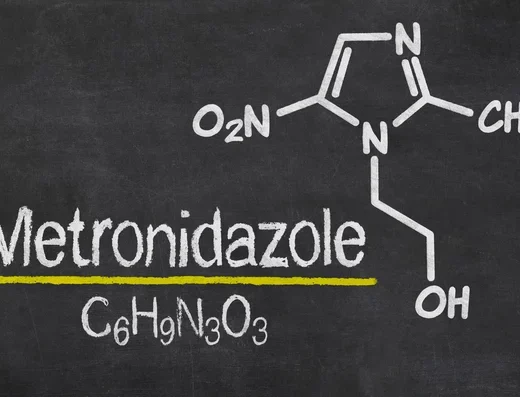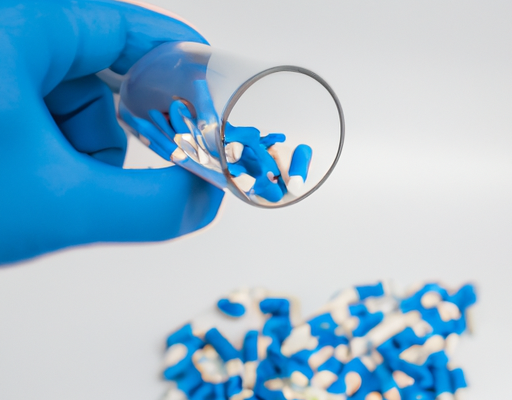• Definition of DKA
Diabetic ketoacidosis (DKA) is a dangerous complication of type 1 diabetes, but it is rarely seen in those with type 2 diabetes. It is caused by an accumulation of ketones in the blood due to lack of insulin. Without insulin, the body is unable to use glucose for energy, and so the body begins to break down fat for energy, resulting in the formation of ketones. DKA can be life-threatening if not treated quickly, and it can lead to coma if left untreated for too long. Early symptoms of DKA include vomiting, abdominal pain, and confusion. Other common symptoms are fruity-smelling breath, excessive thirst, frequent urination, fatigue, and rapid breathing. DKA can be treated with insulin, fluid replacement, and electrolyte supplementation. It is important for those with diabetes to monitor their blood sugar levels regularly to help prevent DKA and other serious complications.
• Definition of Diabetes Insipidus
Diabetes Insipidus is a rare endocrine disorder which is characterized by low levels of antidiuretic hormone, or vasopressin. It is caused by a defect in the body’s natural production of vasopressin and can lead to serious health problems. Common symptoms of this condition include excessive thirst, frequent urination and fatigue.
- Diabetes Insipidus causes an excessive excretion of urine, usually between 3-20 liters per day
- It is caused by a deficiency in the hormone vasopressin, or antidiuretic hormone, which regulates the body’s fluid balance
- The symptoms of Diabetes Insipidus include extreme thirst, frequent urination, fatigue, irritability and weight loss.
- It is diagnosed through a test to measure urine and blood osmolality
- Treatment may include medications which replace the hormone, or the use of water tablets.
• Causes of DKA
Diabetic ketoacidosis (DKA) is a serious and potentially life-threatening complication of diabetes. This condition occurs when the body is unable to produce enough insulin to meet the body’s needs, or when the body is unable to use insulin effectively. In other words, the body cannot use glucose for energy, so the body starts to break down fat for energy, causing the blood to become acidic. DKA can happen with both type 1 and type 2 diabetes, however, it is more common with type 1 diabetes. The most common cause of DKA is insufficient insulin. This can be due to not having enough insulin available, taking less insulin than is required, stopped taking insulin, miscalculating the insulin dose, or miscalculating the amount of carbohydrates consumed. Other causes of DKA can include infection, heart attack, stroke, or medication side effects. DKA can be a medical emergency and should be treated as soon as possible. Early diagnosis and treatment are very important to prevent serious medical complications.
• Causes of Diabetes Insipidus
Diabetes Insipidus (DI) is a rare hormonal disorder that is caused by a decrease in the production or action of the antidiuretic hormone (ADH or vasopressin). This leads to increased urination and severe dehydration. The causes of DI can be subdivided into four categories: central, nephrogenic, drug-induced, and hereditary.
- Central DI – caused by a problem in the hypothalamus or the pituitary gland which results in a decrease in ADH production or action.
- Nephrogenic DI – caused by a decrease in the kidney’s response to ADH, causing an inability to concentrate urine.
- Drug-induced DI – caused by certain medications that interfere with the body’s ability to respond to ADH.
- Hereditary DI – caused by an inherited defect in the genes (chromosomes) that are involved in the production and/or action of ADH.
Each type of DI requires different treatments, so it is important to know the cause in order to receive the proper care. It is important to receive early diagnosis and treatment of DI in order to prevent complications.
• Symptoms of DKA
Diabetic ketoacidosis (DKA) is a serious complication of diabetes that can be life-threatening if not treated immediately. It occurs when the body produces high levels of blood acids called ketones. It is most common in people with type 1 diabetes, but it can also occur in people with type 2 diabetes. Symptoms of DKA include:
- Excessive thirst and frequent urination
- Fatigue, confusion, and anxiousness
- Abdominal pain and nausea
- Fruity-scented breath
- Rapid breathing
- Dry skin
- Unconsciousness
If you experience any of these symptoms, seek medical attention immediately. Complications of DKA can include coma, organ failure, and even death.
• Symptoms of Diabetes Insipidus
Diabetes insipidus (DI) is a rare medical condition where the body is unable to process and retain water. It is caused by either a lack of the hormone antidiuretic hormone (ADH) or a problem with the body’s ability to respond to it. Common symptoms of DI include excessive thirst, infrequent urination, dark and concentrated urine, dehydration, fatigue, and confusion. If left untreated, dehydration and electrolyte imbalances can lead to serious health issues. It is important to seek medical care if you experience any of these symptoms so treatment can be started as soon as possible.
• Diagnosis of DKA
Diagnosing DKA requires a trained medical professional to be able to properly identify the symptoms and complete the necessary diagnostic tests. The most common signs and symptoms of DKA include nausea and vomiting, abdominal pain, frequent urination and excessive thirst. A doctor will usually begin the diagnosis with a physical exam, reviewing the patient’s medical history and collecting a blood sample. If the blood glucose level is high, and ketones are present in the blood or urine, the diagnosis of DKA is confirmed. The doctor may also order a urine sample to check for protein and ketones, or other tests to rule out infections which can mimic the signs and symptoms of DKA. With the correct diagnosis and treatment, most people with DKA can make a full recovery.
• Diagnosis of Diabetes Insipidus
Diagnosing diabetes insipidus can be a tricky process, as many of its symptoms mimic those of other diseases. The doctor will start by taking a detailed medical history, including any past illnesses, treatments, and medical conditions, as well as any medications being taken. During the physical exam, the doctor will measure the patient’s weight, pulse, and blood pressure, and conduct tests such as urinalysis and a complete blood count. Imaging tests, such as an MRI or CT scan, may also be necessary to assess if the brain or pituitary gland are affected. In some cases, the doctor may perform a water deprivation test to confirm the diagnosis, which involves measuring the patient’s body weight and urine output after going without fluids for an extended period of time. It is important to receive an accurate diagnosis so the right treatment plan can be established.
• Treatment of DKA
Treating DKA involves the replacement of fluids and electrolytes, and insulin therapy. The aim is to replace lost fluids and electrolytes, to lower blood glucose levels and to control ketone levels in the blood. Insulin is given to reduce blood glucose levels and also restore normal metabolism. The patient must be closely monitored for signs of dehydration, electrolyte imbalances and continued ketosis. If the patient’s condition does not improve, urgent hospitalization may be necessary. Treatment can include intravenous fluids, electrolyte replacement and the intravenous administration of insulin. In severe cases, dialysis may be necessary to correct severe electrolyte imbalances. Treatment should be aimed at avoiding long-term complications, such as diabetic ketoacidosis, hyperosmolar hyperglycemic state, and cerebral edema.
• Treatment of Diabetes Insipidus
The primary treatment goal of Diabetes Insipidus is to restore adequate hydration and electrolyte balance. Treatment typically involves intranasal administration of desmopressin (a medication that mimics the effect of the antidiuretic hormone in the body) or oral hydration therapy (fluids and electrolyte supplementation). Other medications that may be used include chlorpropamide, a sulfonylurea, and thiazide diuretics. Dialysis may be required in severe cases. Lifestyle modifications are also needed to help the patient better manage their condition. This may include avoiding hot weather and strenuous activities that cause a lot of sweating, as well as increasing intake of fluids to prevent dehydration. Regular monitoring of urine output and electrolytes is also important.
• Outlook for DKA
Diabetic ketoacidosis (DKA) is a serious complication of diabetes. But with proper management and attention, people with DKA can make a full recovery. The outlook for people with DKA is largely determined by the underlying cause, the severity of their symptoms, and the timely response to treatment. Here is what to expect when managing DKA:
- Monitoring vital signs like blood pressure, heart rate, and oxygen saturation.
- Frequent blood glucose monitoring.
- Electrolyte testing and fluid balance.
- Intravenous (IV) fluids and insulin.
- Monitoring for any kind of complications.
- Close follow-up with the care team.
The extensive care and monitoring is necessary to help people with DKA achieve and maintain optimal health. Long-term management involves focusing on lifestyle improvements, such as increasing physical activity and maintaining a healthy diet. With timely diagnosis and proper management, people with DKA have a good outlook.
• Outlook for Diabetes Insipidus
Diabetes Insipidus (DI) is a rare, chronic condition that affects the amount of urine produced by the body. The outlook for patients with DI depends on the underlying cause of the disorder. Most forms of DI can be managed with medication and lifestyle changes, but there is no cure. Knowing the underlying cause can help doctors determine the best course of treatment.
- Regular monitoring of fluid intake and output is important.
- Medication and hormone replacement therapy may help balance the hormones in the body to regulate water levels.
- Salt supplementation can also be used to manage DI and may help reduce urine output.
- Patients should manage their overall health and check for infections regularly.
- Living with DI requires a team of doctors, including an endocrinologist.
With the right treatment and monitoring, most patients with DI can handle their condition and lead full, productive lives.





No Comments